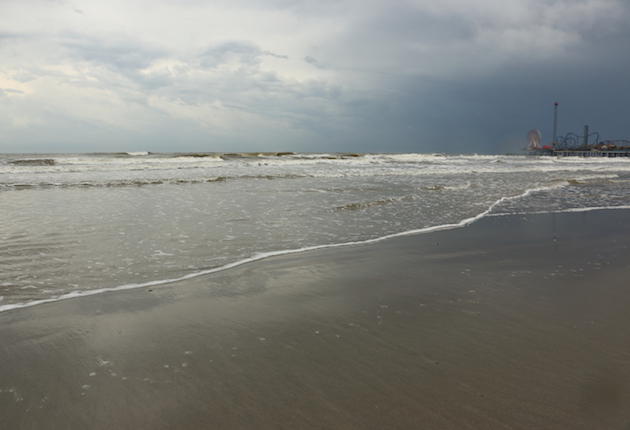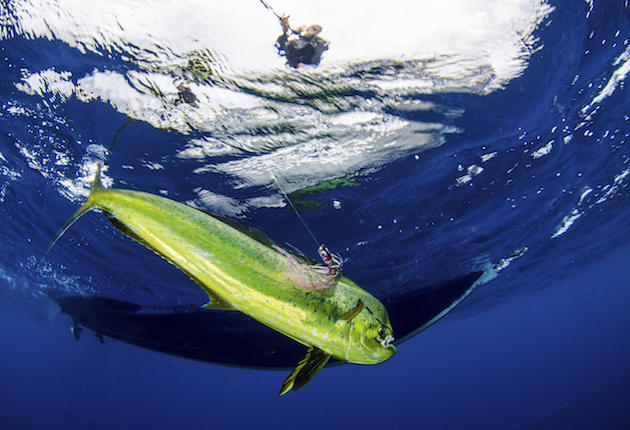I’m in Galveston, Texas, for a media summit with Ocean Conservancy, Trout Unlimited, and American Fly Fishing Trade Association. I’m researching saltwater fisheries for upcoming stories, but my saltwater rod is still in its case on day two. Shame my trout waters back home in the parched West couldn’t take some of the rain Texas is currently plagued with.
I don’t need to wade in the ocean to know there’s a lot more moisture here than at home. I can feel it the Gulf’s humid air. More moisture, more fish, more fishing. But since I can’t fish in the torrential showers outside, I’m inside listening to a guy talk about a smartphone app with potential.
“With this app, you’re not just helping yourself fish, you’re helping state fisheries,” says Mike Readling, Snook and Gamefish Foundation board chairman.
The app Readling’s referring to is iAngler. It’s part of the Angler Action program, which started in Florida after a 2010 freeze killed piles of snook and the fishery entered rebuild mode.
The iAngler app is a citizen fish log for phones, allowing angler input to be added to scientific data collection the day of rather than months later.
“There’s a lot of good anglers out there with a lot of good information,” Readling says. “It can be helpful information in the right hands.”

Stormy weather on the Texas coast. No chance to test out the new iAngler app today. (Photo by Tight Line Media)
Hesitations? There are a few.
For anglers, it’s hot spotting their honey hole, but the app only knows what county you’re in, not exactly where you are in that county.
For scientists, it’s relying on the credibility of anglers who are known for tall fish tales.
Hesitations aside, citizen stats collected via iAngler helped reopen snook fishing a year after the Florida freeze, so scientists are looking and they want accuracy. Even on goose-egg days.
“If you go fishing for eight hours and don’t catch any fish, put zero in your catch log,” Readling says. “Zero is one of the most important numbers for data collection. People might be embarrassed by a zero, but it’s an important number.”
As for competitive use, the app eliminates the need for harvest during tournaments.
Wait. A fisherman can win without holding a single fin hostage? Yes.
“Clubs host their own tournament and the app keeps count,” Readling says. “Fish are out of the water for less time and coordinators can run live scoreboards.”
The first major tournament abandoned catch-and-keep for catch-and-release in 2015 because of the app. More than 3,000 anglers, including nearly 1,000 kid fishers, used the app for 108 days during Florida’s Coastal Conservation Association State Tournament Anglers Rodeo. The tournament allowed photo verification via app versus harvest for visual proof.

To say the new iAngler app will revolutionize tournament fishing is an understatement. (Photo by Tight Line Media)
“When you have a weigh tournament or a tournament where it requires fish to be brought to the scale, that is generally the largest fish being brought in,” says Leiza Fitzgerald, CCA Florida STAR tournament director. “If you look at spotted sea trout, bringing in the heaviest fish means bringing in a big female. From an anglers eye, you only see one fish. But when we look at it from a conservation standpoint, we see thousands and thousands of fish being brought to the scale because females have roe. Those are thousands of fish that will never make it to maturity because the big fish is killed.”
The fish goes free, but data is still collected — and there’s a lot of it. Citizen data entered via iAngler shows snook stock rebuilding itself post Florida freeze. It also shows 50,000 fish logged since 2010, with spotted sea trout, common snook, and red drum as the most commonly caught fish. The majority of those catches are released and the tally continues.
So does use. The app is now tracking stripers in Chesapeake Bay, too.
“The biggest challenge is getting it in people’s hands and showing them how easy it is to use it,” Readling says. “We’ve started down this path and it just gets wider and wider.”
I’m glad to be under shelter at the moment, but I’m itching to go outside, catch a fish, and log it in the app as a citizen fisher contributing to science and my water fetish.
Kris Millgate is an outdoor journalist based in Idaho Falls, Idaho. See more of her work at www.tightlinemedia.com.


For tournament purposes (asking about freshwater bass) how can the app weigh and measure fish?